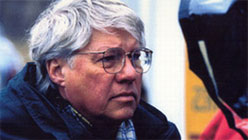If the name John Korty doesn’t ring a bell, fair enough. It has been a while since the North Bay filmmaker’s Oscar-winning 1977 documentary about a family of adopted disabled war orphans, Who Are the DeBolts and Where Did They Get 19 Kids? Since then he has been retiring, in the sense of remaining withdrawn from wide circulation, but not in the sense of stopping work. That distinction seems crucial for Korty, a perennial independent.
Given the Oscar, his many Emmys, and a host of other award nominations, not to mention all the films themselves, we may begin to marvel at the way Korty makes quasi-obscurity look like a trade secret. We may ask: Who is John Korty, and how did he get 50 steady years worth of independent filmmaking experience? Inasmuch as an answer exists, it’ll be available at the Smith Rafael Film Center’s welcome retrospective of Korty’s work.

Who Are the DeBolts and Where Did They Get 19 Kids?
Maybe the most important thing to know going in is not just that Korty’s the guy who inspired Francis Coppola and George Lucas to move to Northern California and work outside Hollywood, but also the guy who stayed his course even after those two became excessively famous and enmeshed within Hollywood.

The Autobiography of Miss Jane Pittman


